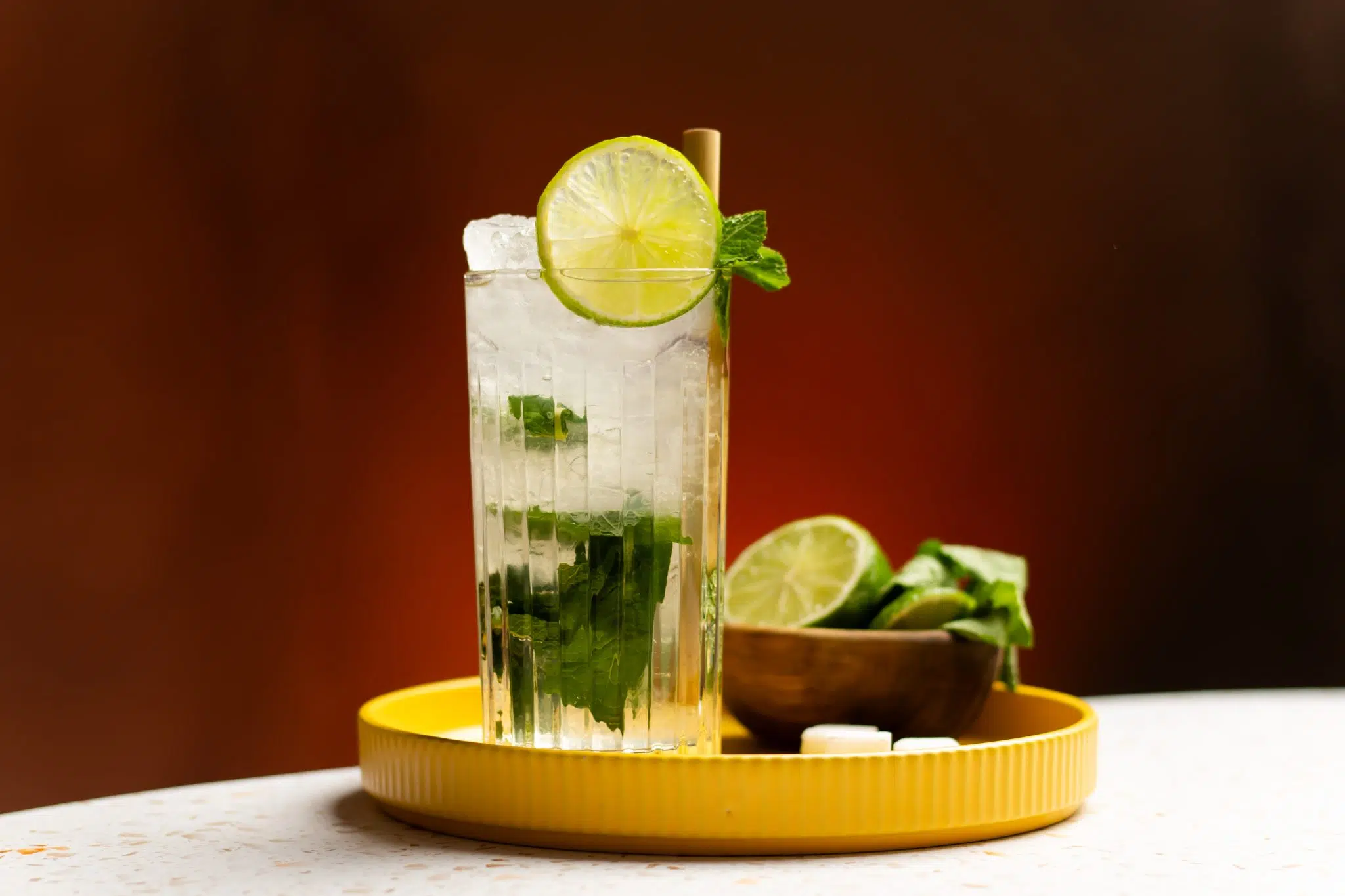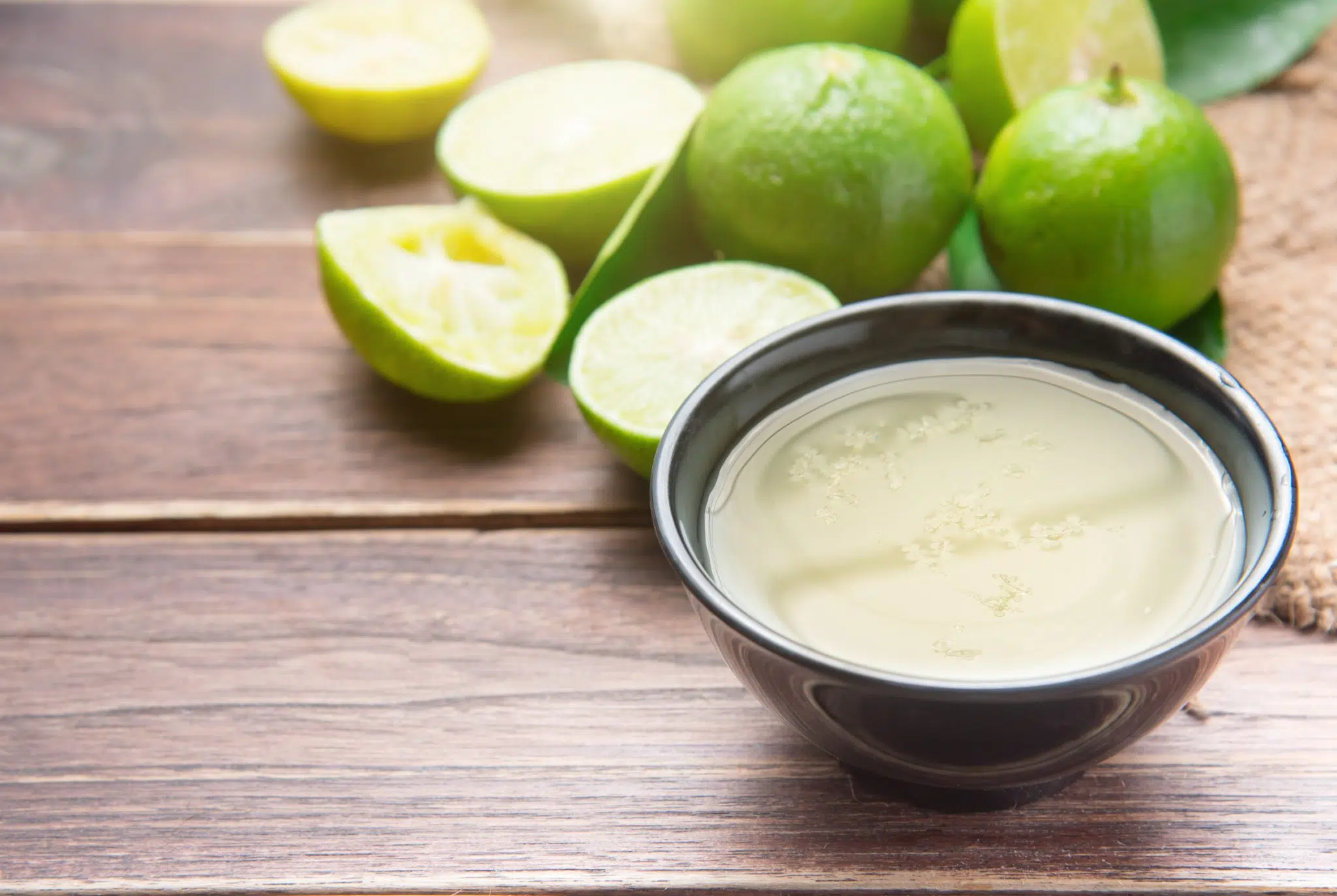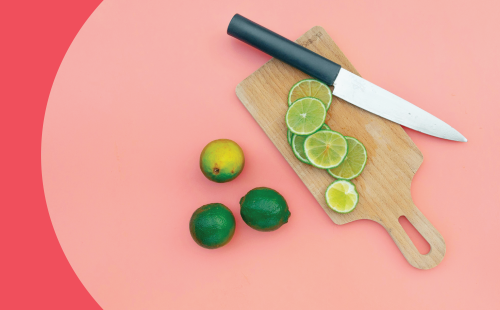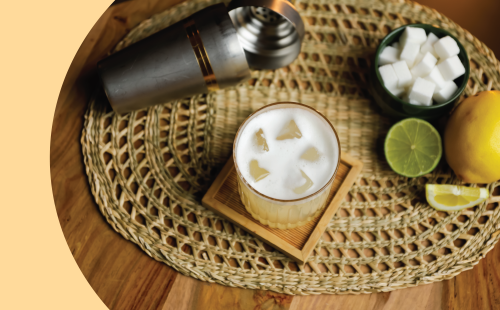Cutting a lime seems easy, but there’s more to it than just hacking it into pieces.
Different cuts play different roles—squeezing fresh juice, garnishing like a pro, or adding that zesty punch. A well-cut lime not only tastes better but looks better, too.
Think about it: a perfectly sliced lime wedge is a joy to squeeze, while a neat lime wheel floats like a dream on top of your drink. And let’s be real, no one’s impressed by a sad, jagged lime slice. Your cocktails deserve better!
In this article, we’ll cover the best techniques for cutting limes, show you the ideal cuts for different cocktails, and share tips to get the most juice from each lime.
So, grab a sharp knife, and get a few limes ready!
Essential Tools for Cutting Limes
Before we start slicing and dicing, let’s make sure we’ve got the right tools in hand. Here’s what you’ll need:
- Knife: A sharp paring or chef’s knife is essential. A dull knife not only makes it harder to get a clean cut, but it’s also more dangerous because you have to apply more pressure.
- Cutting Board: A stable cutting board is key. Opt for one that won’t slip around while you’re slicing, and make sure it’s clean.
- Citrus Juicer or Reamer (Optional): If you’re juicing a lot of limes, having a juicer on hand can save time and energy.
- Sharpening Tool: Keep that knife sharp! A sharp blade ensures clean cuts and less frustration.
Got everything? Let’s get to the fun part—cutting!
The 3 Basic Lime Cuts
We’re starting with the basics. If you master these three classic lime cuts, you’ll be able to handle almost any cocktail recipe with ease.
-
Lime Wedges
The trusty lime wedge is the workhorse of the cocktail world. It’s the perfect size for squeezing a burst of juice into your drink and adding a pop of color. But not all lime wedges are created equal. Too big, and you’ll have trouble squeezing out the juice. Too small, and it won’t pack enough flavor.

How to Cut Lime Wedges:
- Start by cutting off both ends of the lime. This helps expose more juice vesicles.
- Stand the lime on one end, then slice it lengthwise down the middle, creating two halves.
- Cut each half into two or three wedges, depending on the size of the lime. For larger limes, go for thirds; for smaller limes, quarters work best.
- Make sure the wedges have some thickness so they can be easily squeezed.
Best Uses for Lime Wedges:
- Margaritas: Essential for squeezing into the glass or rubbing along the rim before salting.
- Mojitos: The wedge adds a fresh burst of lime as you muddle the drink.
- Gin and Tonics: A quick squeeze of the wedge will balance the flavors perfectly.
-
Lime Wheels (or Rounds)
Lime wheels are all about presentation. Perfectly thin, circular slices of lime add that finishing touch to cocktails, especially those served in highball or Collins glasses. They’re not necessarily for squeezing but more for placing them on the rim of the glass or for floating atop your drink, slowly infusing the liquid as you sip.

How to Cut Lime Wheels:
- Trim off both ends of the lime to create flat surfaces.
- Lay the lime on its side and slice it into thin, even rounds, about 1/4 inch thick. The thinner the slice, the more delicate it will look in the drink.
- Remove seeds if needed, and make sure the edges are clean and round.
Best Uses for Lime Wheels:
- Margaritas: Place a lime wheel on the rim of the glass for that classic, polished look.
- Caipirinhas: Lime wheels offer a touch of elegance as the drink mixes with crushed ice.
- Highball Cocktails: Lime wheels add visual appeal, whether it’s a Gin and Tonic or a Tequila Sunrise.
-
Lime Halves
Sometimes, you just need a lot of juice, and that’s where lime halves come in. When you’re making juice-heavy cocktails like Margaritas or Daiquiris, cutting the lime into halves ensures you get the maximum juice yield with minimal effort.

How to Cut Lime Halves:
- Simply slice the lime in half widthwise.
- Use a citrus reamer or juicer to squeeze out the juice efficiently.
- For maximum juice, you can also roll the lime on the counter before cutting it. This helps break down the fibers inside, making it easier to juice.
Best Uses for Lime Halves:
- Margaritas/Daiquiris: These famous cocktails need a good hit of fresh lime juice.
- Lime Cordials or Fresh Juice: When making lime juice in bulk for multiple cocktails, halves are your go-to.
Advanced Lime Cutting Techniques for Garnishes
Once you’ve mastered the basics, it’s time to step up your lime game with some more advanced cuts. These cuts are all about enhancing the visual appeal of your drinks and adding that extra “wow” factor.
-
Lime Twists
A lime twist is the garnish of choice for cocktails where you want to add both flavor and a little style. It’s all about that spiral of lime peel hanging elegantly over the edge of the glass.

How to Cut a Lime Twist:
- Start by cutting off both ends of the lime.
- Make a shallow cut around the lime’s circumference with a knife or peeler, removing only the peel and avoiding the bitter white pith.
- Slice the peel into thin strips and twist them into spirals using your fingers or by wrapping them around a straw.
How to Cut a Lime Twist (using a channel knife):
- Hold the lime firmly in one hand.
- With the channel knife in your other hand, press it into the surface of the lime.
- Rotate the lime while gently pulling the channel knife along the surface to create a twist.
Best Uses for Lime Twists:
- Gimlets: The lime twist adds a fresh citrus aroma as you sip.
- Vodka Martinis: A lime twist brings both class and flavor to the glass.
-
Lime Zest
Lime zest isn’t just a garnish—it’s an aromatic burst of citrus. By zesting the outermost part of the lime peel, you release the essential oils, adding a layer of complexity to your drink. Plus, a little sprinkle of zest can give your cocktail an Instagram-worthy look.
How to Zest a Lime (Finely grated):
- Use a microplane or zester to gently remove the green outer layer of the lime peel.
- Avoid the white pith, which is bitter and unpleasant.
- Sprinkle the zest directly over the drink for an aromatic garnish.
How to Zest a Lime:
- Use a peeler or a sharp knife: Cut long strips of zest, about 2-3 inches.
- Avoid the white pith, which is bitter and unpleasant.
- Place the zest inside or on the rim of the glass for garnish. Before doing so, gently twist the zest over the drink to release its essential oils.
Best Uses for Lime Zest:
- Margaritas: Add a sprinkle of zest for extra aroma and flavor.
- Daiquiris: Finish off your drink with a dash of lime zest to elevate the flavor profile.
-
Lime Boats
Looking for something a bit more playful? Lime boats are a fun way to serve a cocktail garnish or even small ingredients like spices. They also add a tiki vibe to tropical drinks.

How to Make Lime Boats:
- Cut the lime in half widthwise.
- Use a small spoon to scoop out the flesh, leaving a hollow lime “boat.”
- Fill the boat with garnishes, or even small rum shots for a tiki drink presentation.
Best Uses for Lime Boats:
- Tiki Cocktails: Serve rum shots or spices in lime boats for an interactive garnish.
- Tropical Drinks: They add a playful element to any tropical-themed cocktail.
How to Cut Limes for Maximum Juice Yield
Juicing a lime seems simple, but there are a few tricks to get the most juice out of each lime:
- Roll the Lime: Before cutting, roll the lime firmly on the counter to break down the juice vesicles inside.
- If you are using a juicer, crosswise cuts might result easier, while if you are squeezing by hand, lengthwise cuts could provide a better grip for juicing.
- Score the Peel: Lightly scoring the lime peel before juicing helps release more juice.
Safety Tips for Cutting Limes
We know you’re eager to cut into those limes, but safety comes first:
- Use a Sharp Knife: A sharp knife is safer than a dull one because it requires less force to make clean cuts.
- Cut on a Stable Surface: Make sure your cutting board is stable and non-slip to prevent any accidents.
- Mind Your Fingers: Tuck your fingers under while cutting to avoid any mishaps.
Storing Cut Limes
Once you’ve cut your limes, how do you store them to keep them fresh?
- Refrigeration: Store lime wedges, wheels, or halves in an airtight container in the fridge. They’ll last 1-2 days before drying out.
- Wrap in Plastic or Beeswax Wraps: This helps retain moisture, especially for lime halves.
- Freeze Leftover Juice: You can freeze leftover lime juice in ice cube trays for later use in cocktails.
Using Leftover Lime Pieces
Don’t let any part of your lime go to waste:
- Zest the Rinds: Peel your limes before juicing them to save and use the zest for garnishes and recipes.
- Make Lime Simple Syrup: Combine lime juice with sugar and water to make a citrusy simple syrup for future cocktails.





